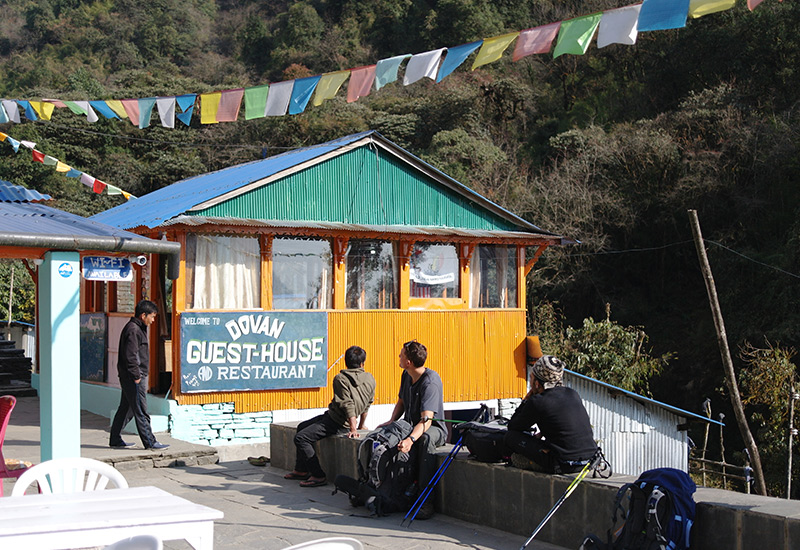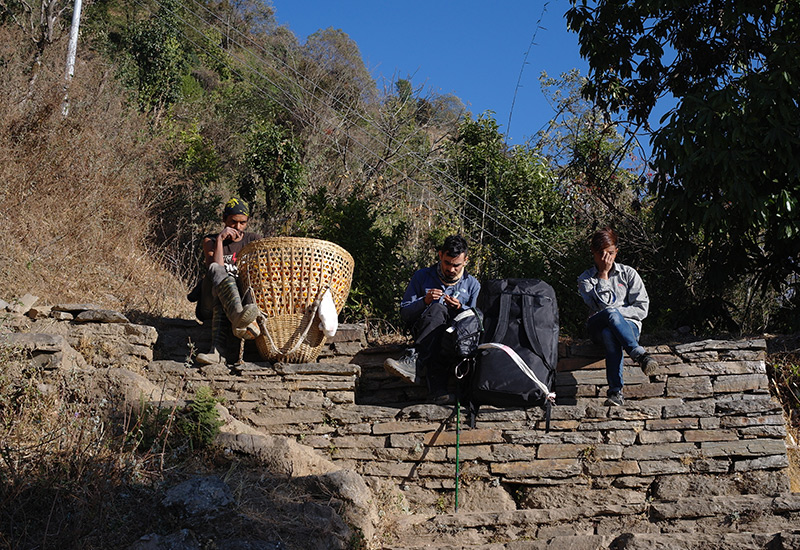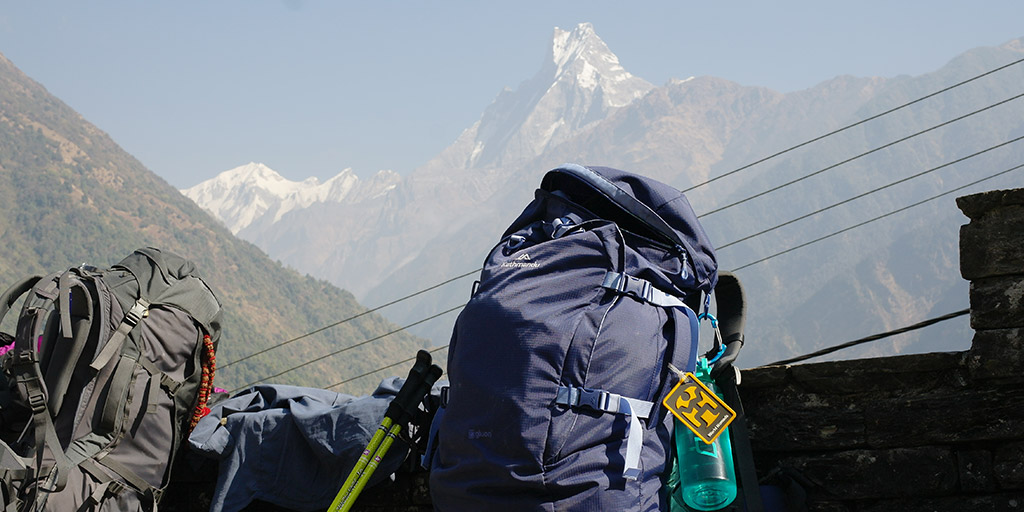What to pack for a 5–10 day winter trek in Nepal
So, you’re planning to trek in Nepal during winter? Fear not! We had a great time on our 6 day trek to Annapurna Base Camp in January, when the skies were clear and the air was cool.
When you’re setting off for a multi-day trek during winter, it’s a good idea to pack the essentials – nothing more. Essentially, the essentials are; enough layers to stay warm, a first-aid kit, and a comfortable pair of trekking shoes.
I carried a 65L front-loading backpack (click here to check it out, there’s a separate bag for men and women). The best feature on this bag is the luggage-style opening. Instead of fishing around a top-opening backpack every time I needed to find something, I could easily unzip the bag, pick the packing cell that contains what I need, zip it back up, and carry on.
The second best part was the section at the top, where I kept a few snacks, my wallet, my camera, and my hat. Easy access makes trekking simple.
The packing list below got me through a 6 day, winter* trek to Annapurna Base Camp. If we chose to do Poon Hill (an extra two or so days), I still would’ve had enough clothing and supplies to get me through.
Sign up to download a copy of our 6 day Annapurna Base Camp trek itinerary!

What’s inside my 65L backpack for a winter trek in Nepal
Clothing
- Hiking boots
- A pair of slides or hiking sandals (you could pack a pair of thongs, but slides or sandals can be worn with socks)
- 2 x beanies
- 1 x polarised sunglasses
- 1 x black cap
- 1 x trekking shorts
- 1 x waterproof rain pants
- 1 x full-length trekking pants
- 1 x waterproof/windproof jacket
- 1 x fleece mid-layer
- 1 x lightweight down jacket
- 1 x mid-layer moisture wicking top
- 2 x wool t-shirts
- 3 x long sleeved wool thermal tops (two thin, one thick for night time)
- 3 x wool thermal pants (two thin, one thick for night time)
- 6 x wool hiking socks
- 2 x thick, warm socks for night time
- 1 x fleece track pants for night time
- 1 x micro-fibre towel
- 10 x underpants
- 2 x sports bras
- 1 x inner gloves
- 1 x outer gloves
- 1 x thin buff for daytime trekking
- 1 x thick fleece buff for night time
- 1 x headband
- 1 x swimsuit
Electronics
- Led lenser headlamp
- Headphones
- Phone charger (power points in Nepal are international)
- Camera (Sony a6000) and charger
First-aid kit
- Antibiotics
- Neurofen or panadol
- Diamox
- Strepsils
- A gastro kit
- Compression bandages
- Multiple bandaids
- Deep heat
- Toilet paper (you can buy this along the way at tea houses)
- Emergency blanket
- Water purification tablets
Toiletries
- Insect repellant
- Tooth brush and tooth paste
- Wet wipes
- Moisturiser
- Sunscreen
- Multiple hair ties and bobby pins
Other items
- Waterproof bag cover
- Trekking poles
- 2 x 1L water bottles (or a 2L Camelbak)
- Sleeping bag (-8ºC)
- Probiotics and multi-vitamins
- Gaiters

*Give or take a few thermal items if you’re trekking in summer.
Optional items I didn’t pack
Crampons. We were trekking at the start of January, so we were prepared for large dumps of snow. However, we didn’t receive any snow while we were on the trail, and we were experiencing extremely warm weather (thanks, Climate Change).
Some trekkers in the past have advised that the trail from Deurali to ABC can get super slippery after a snow-dumping. If there’s a heavy snow forecast, renting crampons might be a good idea.
But, I’m confident a set of sturdy trekking poles, grippy shoes, and very slow movements will be caution enough to avoid any unwanted broken ankles. Besides, crampons aren’t the safest of objects to have dangling off your backpack.
A huge camera kit. I mean, you do you, but a large camera kit would just get in the way. Not to mention the frustration caused by travelling with someone who’s constantly stopping to change lenses – that would be a serious pain-in-the-arse.
BYO two-minute noodles, instant coffee and tea. Instead of paying 120NPR for tea (at higher altitudes) you could just bring your own tea bags. Same goes for meals, if you pack your own two-minute noodles, all you need is to pay for a bowl of hot water (shouldn’t be more than 80NPR). That’ll save you money, but it’s really not necessary to carry your own food.
*This post contains Amazon affiliate links.
March 8, 2024

Join the discussion!